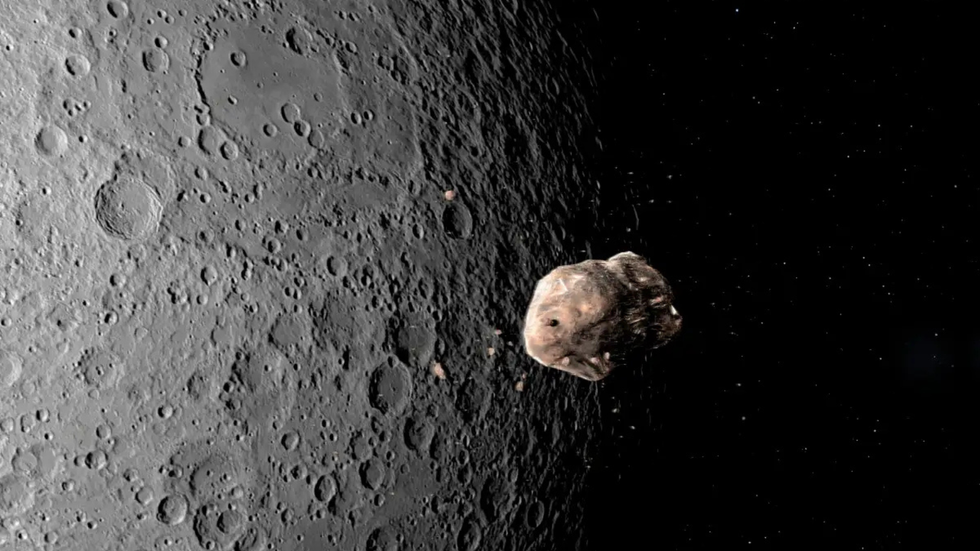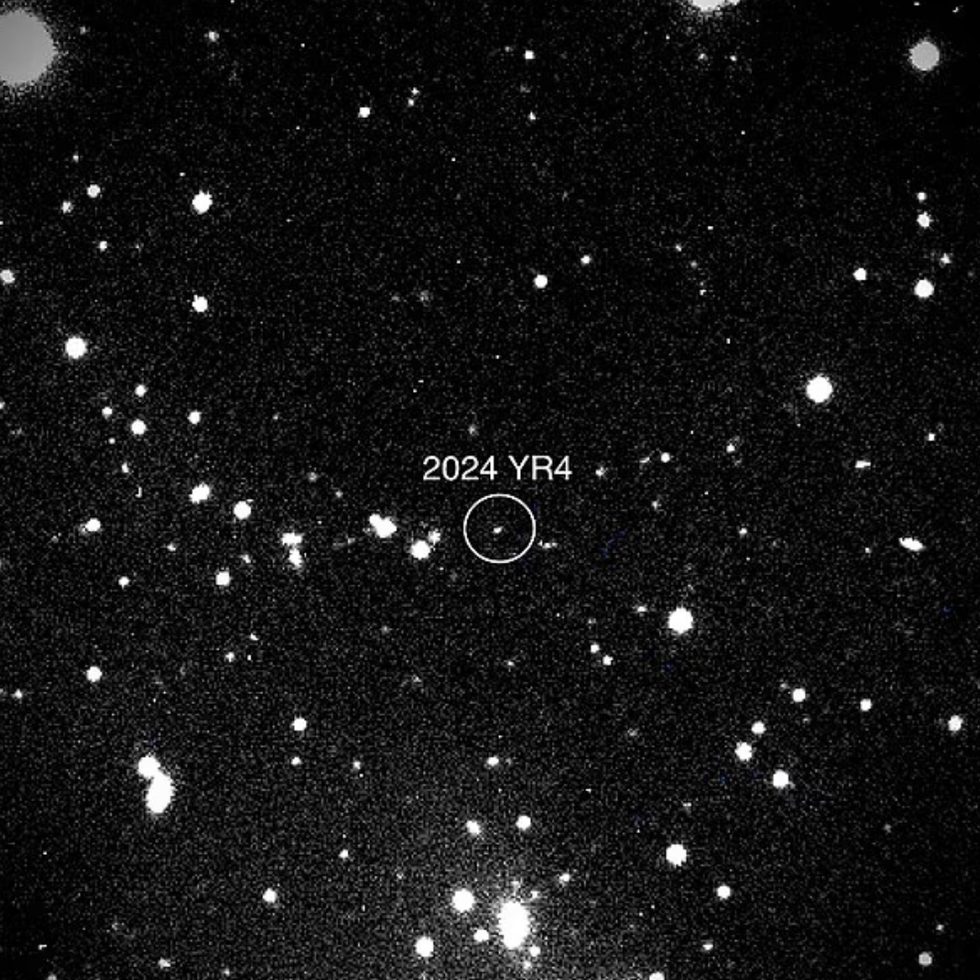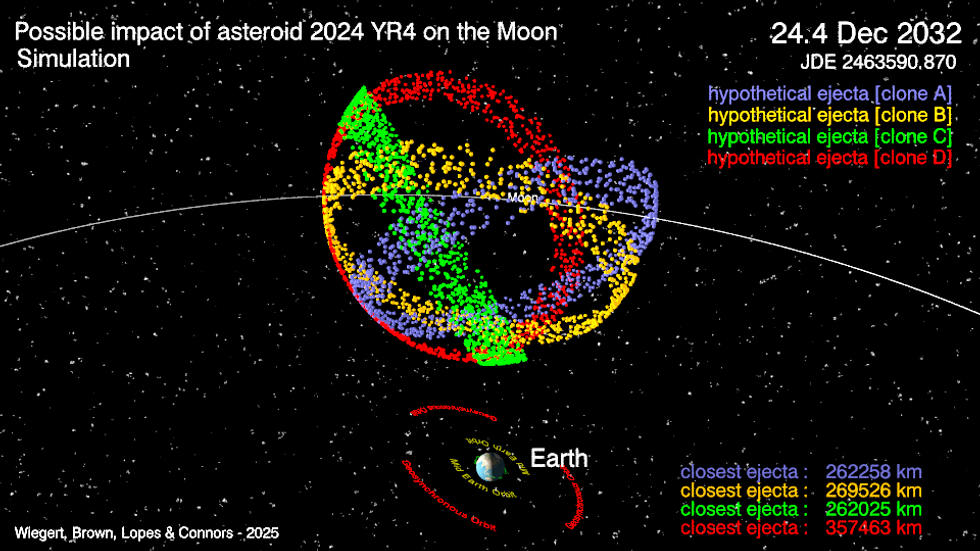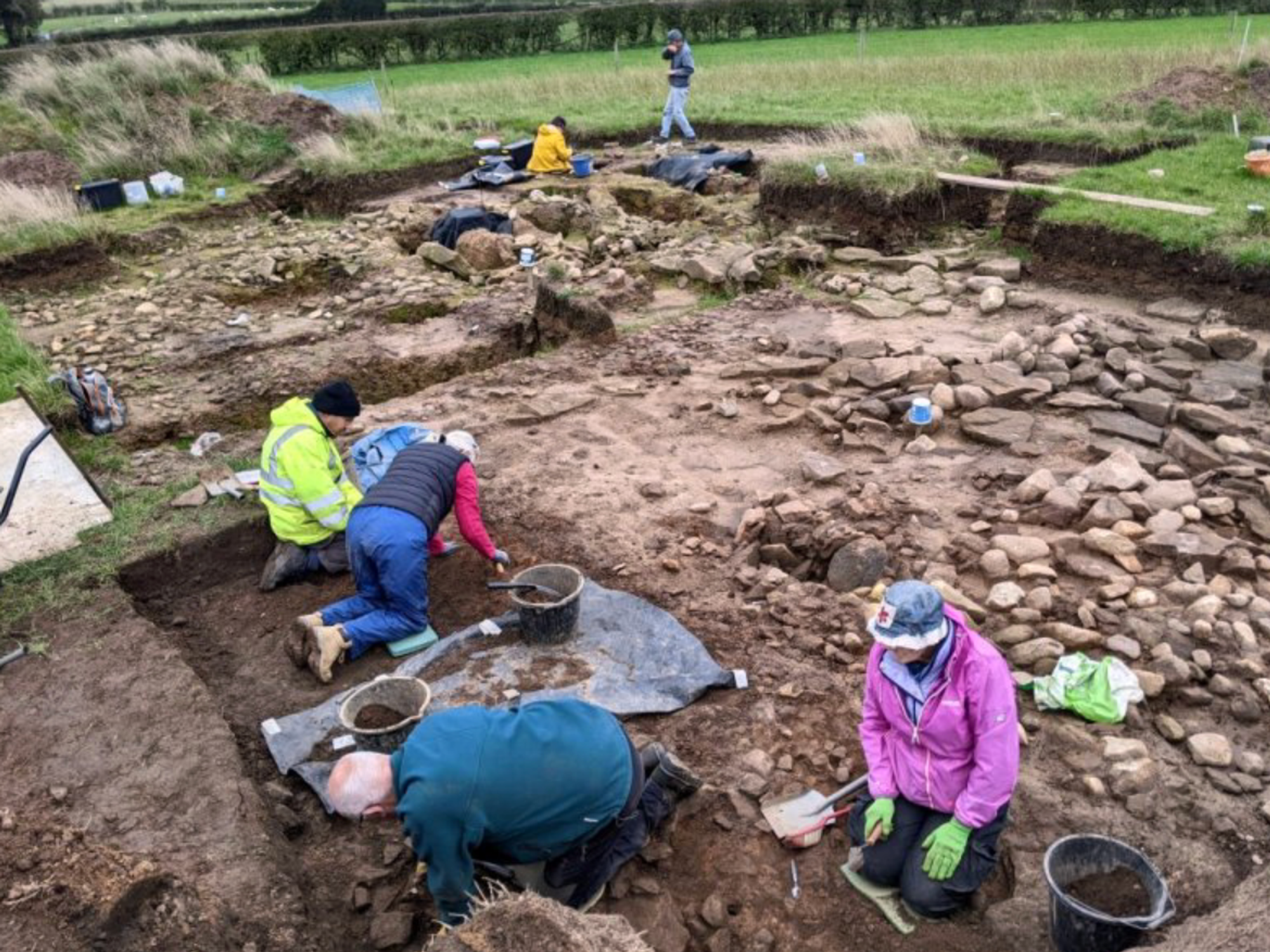City-killer asteroid on collision course with Moon could shower Earth with SHRAPNEL after impact

Some 10,000 tonnes of material from the surface of the moon could rain down on our planet
Don't Miss
Most Read
Latest
An asteroid on collision course with the Moon could shower Earth with shrapnel and debris if it hits our natural satellite, scientists have warned.
Researchers have said that asteroid 2024 YR4, which no longer threatens Earth directly, still poses a significant danger - with Nasa just days ago pencilling in a 4.3 per cent chance of striking the moon on December 22, 2032.
The 60-metre space rock could impact the Moon at speeds exceeding 29,000mph, creating a 0.6-mile-wide crater in what would be the largest lunar collision in 5,000 years, according to simulations by Dr Paul Wiegert from the University of Western Ontario.
The "city-killer" asteroid, first detected in December 2024, initially sparked alarm with a 3.1 per cent probability of hitting Earth before emergency observations from the James Webb Space Telescope confirmed it would miss our planet.

Emergency observations from the James Webb Space Telescope confirmed the 'city killer' would miss our planet (file photo)
|GETTY
Dr Wiegert's calculations reveal that the impact would eject approximately 10,000 tonnes of material from the surface of the moon, ranging from 0.1 to 10 millimetres in size.
Earth's gravity could funnel between 10 and 30 per cent of this debris directly towards our planet, depending on the impact location along the moon's southern hemisphere.
"We were a little bit surprised at the possibility of there being a substantial amount of material at the Earth," Dr Wiegert told New Scientist.
The simulations indicate this bombardment could cause up to a decade's worth of satellite damage in just days, with particle impact rates between 10 and 1,000 times higher than normal.
MORE ASTEROID WARNINGS:

2024 YR4 no longer threatens Earth directly, but still poses a significant danger
|NASA
The debris cloud poses particular risks to satellite constellations like SpaceX's Starlink, with Dr Wiegert predicting "hundreds to thousands of impacts from mm-sized debris" in a preprint paper submitted to the American Astronomy Society Journals.
Nasa's planned Lunar Gateway and the Artemis programme could also face severe disruption, with debris threatening rovers, landers and astronaut safety.
Professor Mark Burchell from the University of Kent warned that simultaneous satellite failures would be far worse than occasional incidents spread over time.
"A lot of satellites failing at once is worse than occasional failures spread over a decade, as the latter can be more readily managed without stretching resources," he told the Mail.
LATEST SPACE UPDATES FROM GB NEWS:

PICTURED: A computer simulation of the delivery of material from the Moon to the Earth
|WIEGERT, BROWN, LOPES & CONNORS/UNIVERSITY OF WESTERN ONTARIO
Research by Prof Burchell indicates that debris as small as one millimetre could damage solar cells, sever cables and even penetrate astronauts' space suits.
Larger fragments up to 10 millimetres could breach spacecraft interiors and cause "increasing damage", according to his findings.
"If a sensor is damaged, or a piece of cabling, the satellite as a whole is still there, but may lose performance or some essential capability," Prof Burchell explained.
He compared the potential damage to "the difference between a car crash which wrecks your car and getting a chip on the windscreen."










